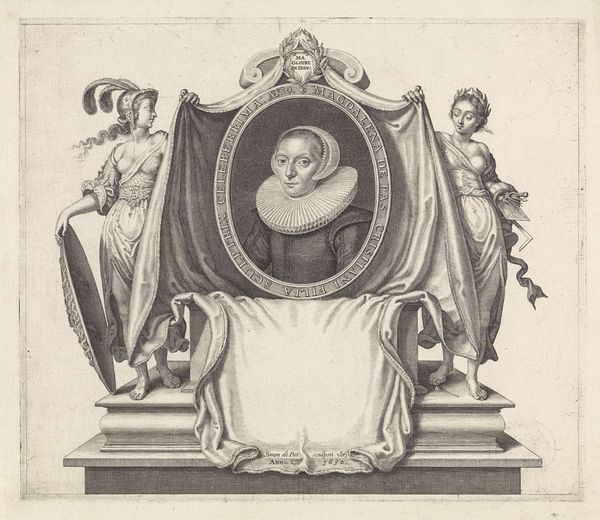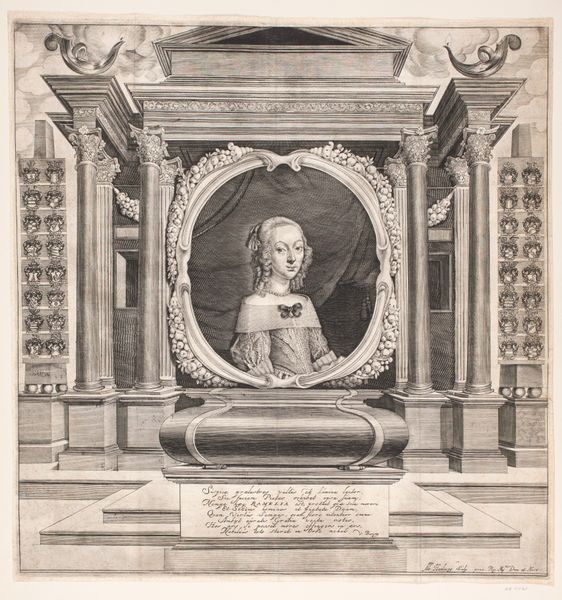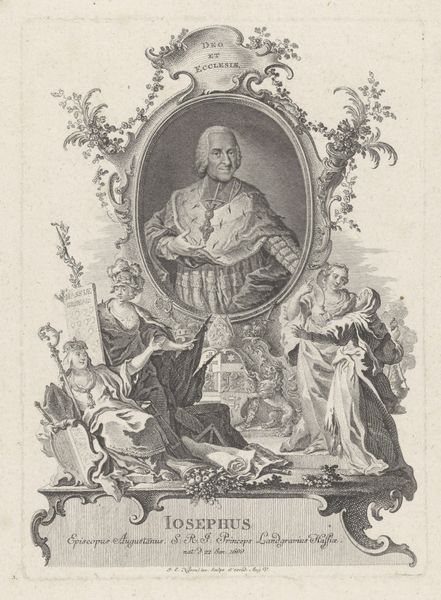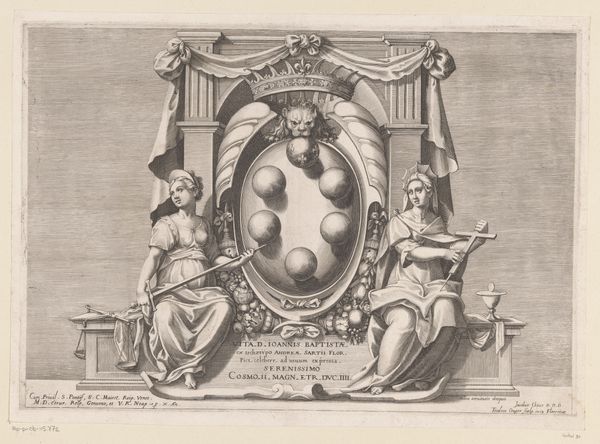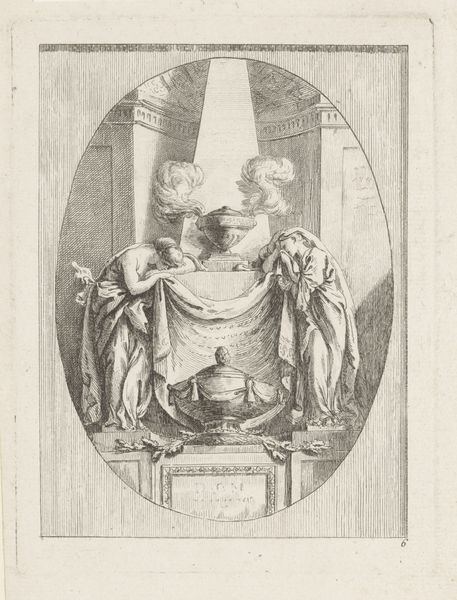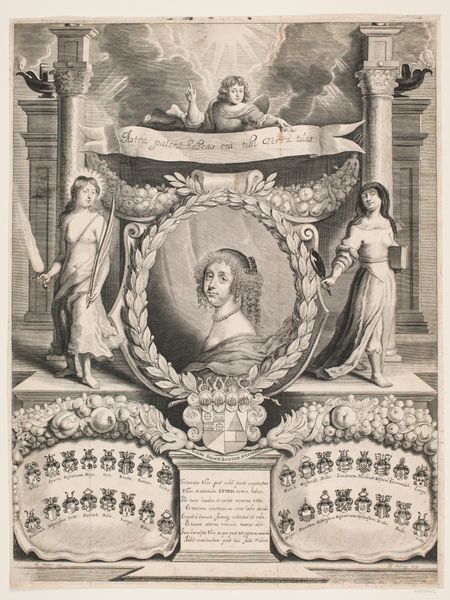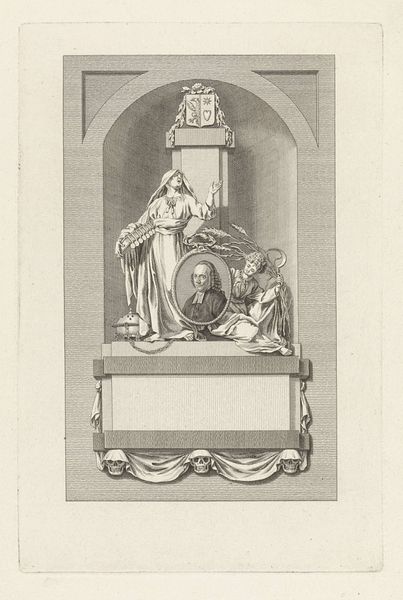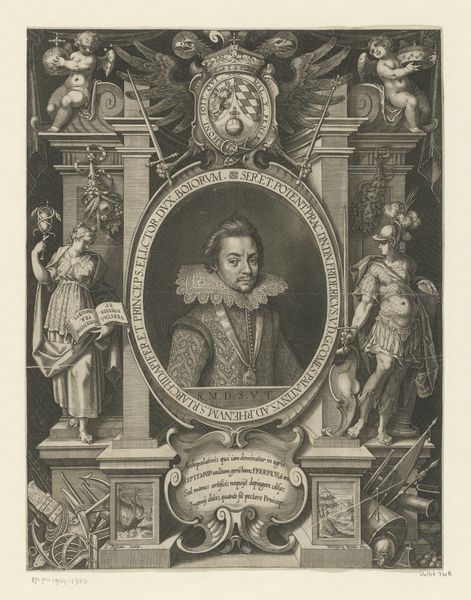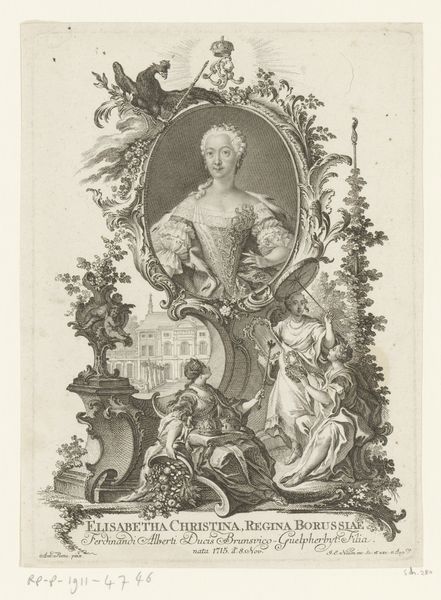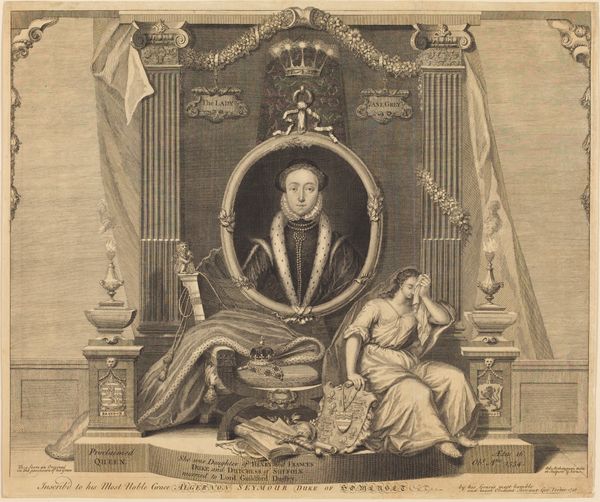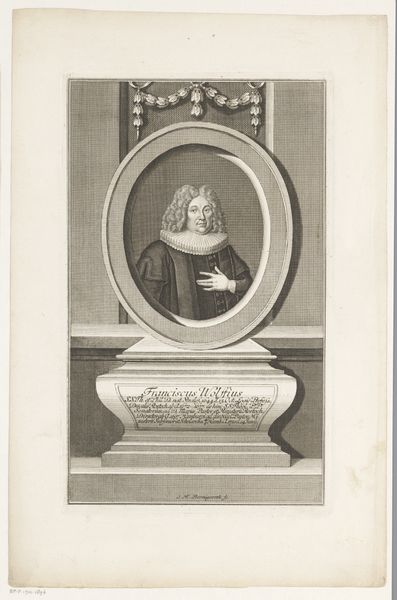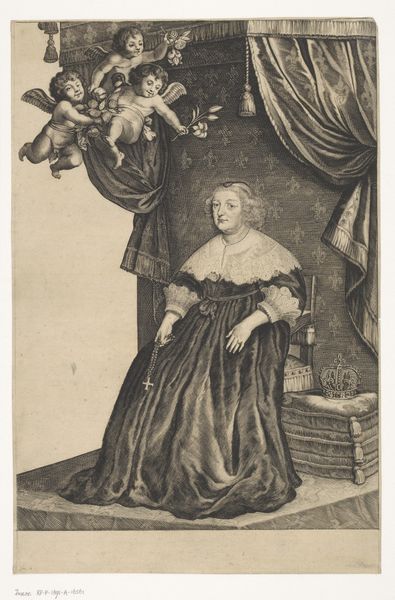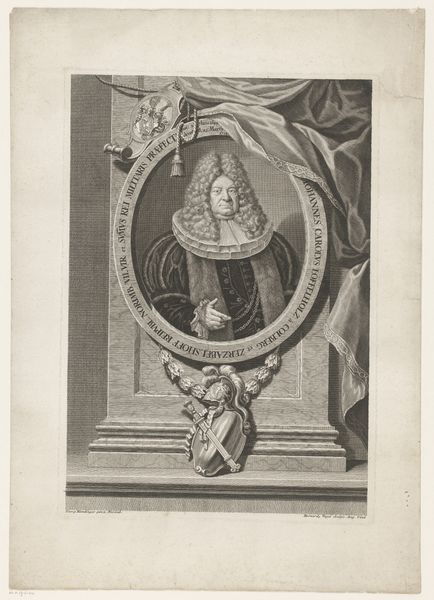
print, engraving
#
portrait
#
baroque
# print
#
figuration
#
history-painting
#
northern-renaissance
#
engraving
Dimensions: 210 mm (height) x 243 mm (width) (bladmaal), 203 mm (height) x 237 mm (width) (plademaal)
Curator: Here we have an engraving from 1630, titled "Magdalena van de Passe," crafted by Simon de Pas. Editor: It strikes me as incredibly staged, almost theatrical. There's a somber formality in the sitter’s expression. Curator: Absolutely. It’s framed, literally, within layers of symbolic presentation. Note the figures holding open what appears to be a curtain around the central portrait of Magdalena. These figures are acting as vehicles of a sort of allegorical narrative. Editor: That framing is visually very engaging, although as a print, the tactile qualities are removed. Still, I'm wondering about the process. What kind of labor went into something like this? The details on that ruff around her neck must have taken ages to produce with engraving. Curator: The repetition of lines is itself quite striking. What the details do give us is insight into a visual culture of symbolism. The draped figures on either side are associated with both authority and nobility, even intellect. She’s shown as virtuous, even dignified. It creates an association of character with image, linking Magdalena to other historical exemplars. Editor: That connection you make is quite fascinating. Does this imply that the purpose of such portraits at the time was less to illustrate and individual likeness and more to demonstrate cultural norms, class standings, and access to luxury materials? Curator: Very much so. Portraiture then acted almost like a cultural mirror. It told you about both the subject and also the larger forces and narratives that helped shape them. In that sense, portraiture provided not just an image but a story, with layered meanings. Editor: Looking closely, the stark contrast between the delicate detailing in the curtain drapery versus the heavy presentation of the name on the frame speaks volumes. Curator: Exactly, all crafted by careful lines and intentional contrasts. And even now, nearly four centuries on, these symbolic touches add significant dimensions to her image. Editor: So beyond the face itself, we get to consider labor, craft, performance, status, the movement of images, and of course, Magdalena's symbolic weight across time. Thanks for pulling those narrative threads.
Comments
No comments
Be the first to comment and join the conversation on the ultimate creative platform.
